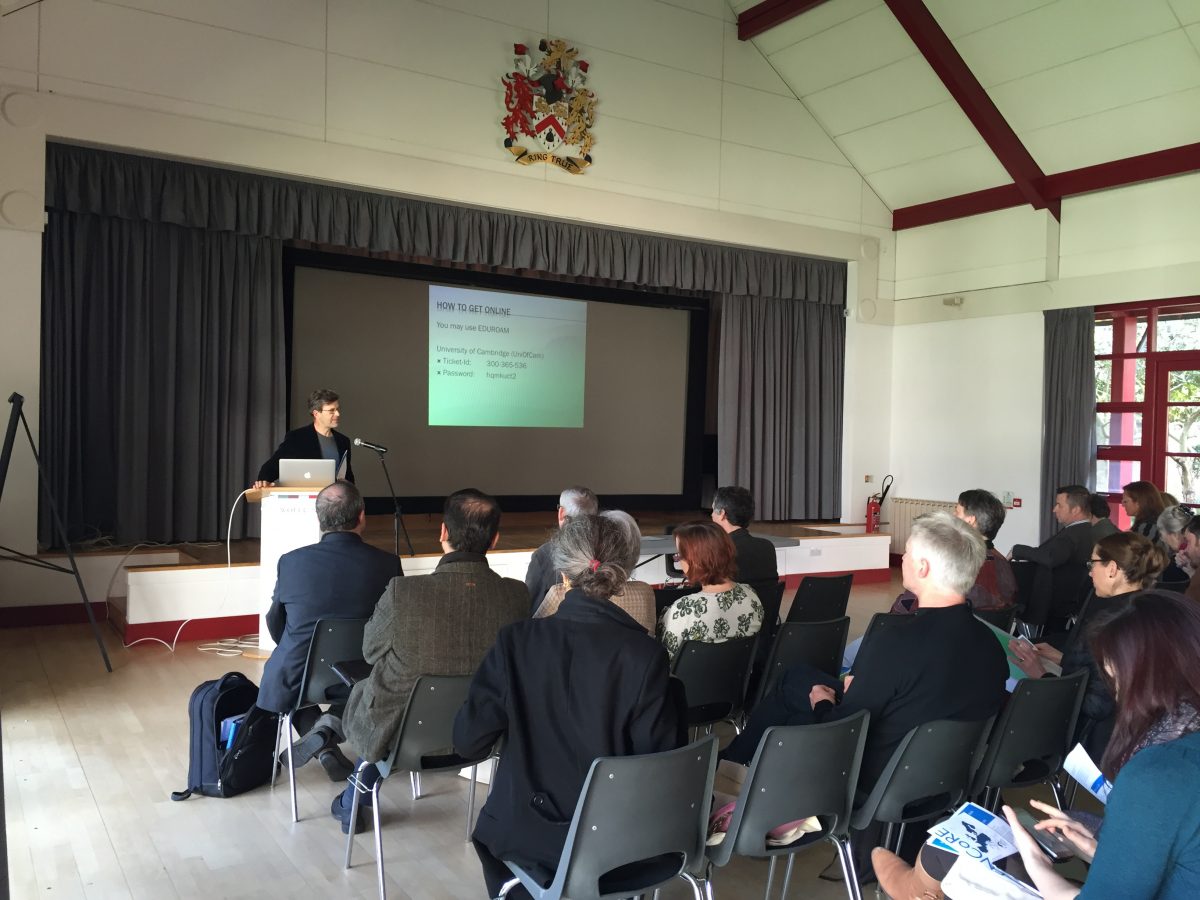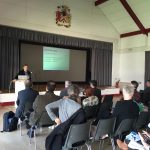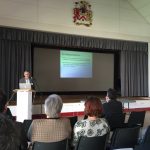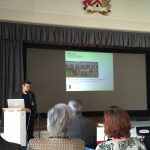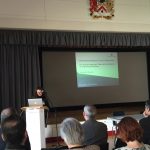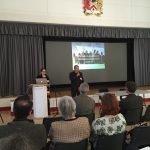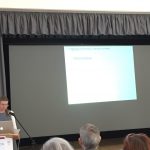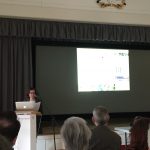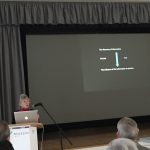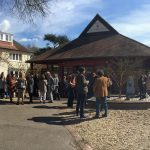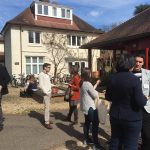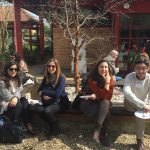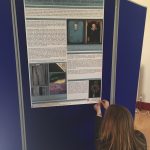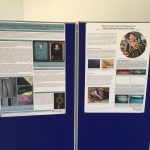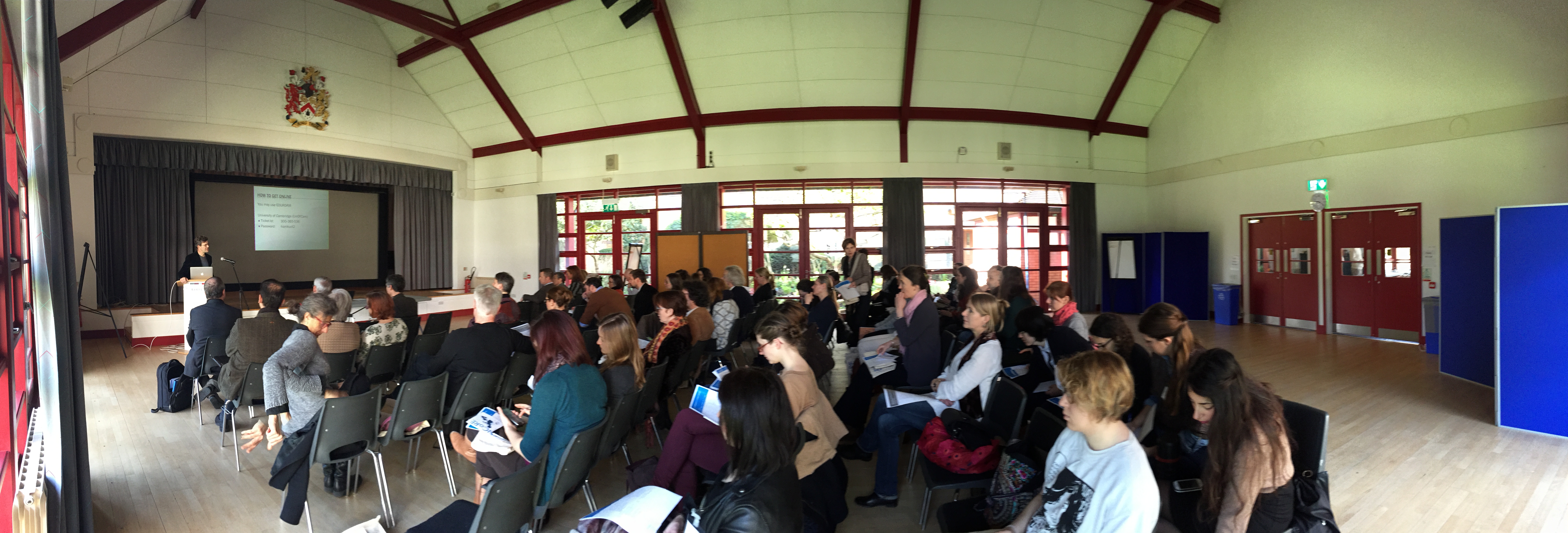
ENCoRE is a network organisation of European higher education institutions operating in the field of conservation-restoration. It was founded in 1997 with the principal objective to promote and develop research and education in the conservation of cultural heritage. The conference held in Cambridge on April 13th 2016 was entitled “ENCoRE: On Practice in Conservation-Restoration Education”. Two more days followed, called General Assembly, where the different actors talked about the current issues in conservation education.
As the title says, education is a major focal point of ENCoRE. Another important point that was raised that day was the importance of research and its relationship to education. In many other fields, it is easy to imagine these two linked. But for us conservators, linking lab research to studio practice is not always easy.
A short summary of each talk follows:
Key-note speaker René Larssen, associate professor at the Royal Danish Academy of Fine Arts in Copenhagen, stressed in his presentation the importance of doing research consistently, in small practical projects. Through two case studies, he showed how simple observations of alterations can be translated into hypotheses that can then be investigated by researchers and scientists. In short, early and systematic communication between conservators and researchers leads to a faster problem solving and thus a better understanding of the aging of our treatments on works of art. Another very important point he raised was the need to adopt standardized terms through the European Committee for Standardization (CEN), an idea that was backed up by Leslie Carlyle during the Q&A. She illustrated her argument with the need for standardisation of UV filters so that photos of artworks and cross sections can be compared between institutions.
Sebastian Dobrusskin, Professor for Conservation and Restoration of Graphic Art and Photography at Bern University of the Arts, described the structure of the conservation programme at his university and mentioned the difficulties of communication related to the three national languages of Switzerland: German, French and Italian, as well as new research programs more adapted to students needs.
Elisabeth Peacock, Professor at the University of Gothenburg, explained how she designed a Research Methods Course from scratch, after receiving complaints from students feeling unprepared for independent research. After attending an ICOM Summer Course in 2013, in four months she designed a structured course oriented towards problem-solving learning formats, so students can become familiar with research methods while benefitting from collaboration with students from different backgrounds and levels of ability.
Alison Heritage, ICCROM, talked about the importance of educators in promoting research. Heritage science creates cultural values and links various fields together, and in her opinion, collaboration is the key element to success as a discipline. She also acknowledges that teamwork can be challenging due to lack of trust between individuals with vast differences in personalities or culture.
Like Peacock, Lecturer in Conservation at the University of Oslo Douwtje van der Meulen put together a course package and worked with students to improve it. The course was centred around general skills such as problem solving and critical thinking, basic research skills and communication. Her teaching philosophy is called “active learning” as inspired by Confucius’ quote: “Tell me and I will forget, show me and I will learn, involve me and I will understand.” By teaching students how to gain knowledge through research, then discussing their results and using their findings in an essay, she noticed that the information was better assimilated since the students could see how to use it in their practice.
Key-note speaker Leslie Carlyle, currently Professor at the University of Lisbon presented case studies demonstrating the gap between the information available in conservation and the practice. She notably pointed out how long it takes for practices to be properly studied and written about, choosing the example of the nylon coating (used on everything and anything since it was so popular in the 1960’s) and diammonium citrate for the cleaning of paintings. She also demonstrated the passage of time between the publication of literature and its assimilation into practice. In a case study, she spoke of conservators ignoring the literature or not having access to it, and choosing to use products that were no longer recommended, creating long-lasting conservation issues for objects. Finally, she mentioned the latest conference on Lead Soaps, held in March 2016 at the Rijksmuseum. This conference was, in her opinion, the first one where conservators and scientists fully collaborated in order to get a better understanding of this degradation phenomenon and to find solutions to the problems created by these soaps. As conservators are doing more and more research, they elevate themselves to the level of scientists, which helps them better formulate questions to get faster answers.
Boris Kvasnica, Professor at the Academy of Fine Arts and Design in Bratislava, explained the structure of the conservation programme and the importance of collaboration between different fields, illustrating his point with case studies of students in conservation, chemistry and art history successfully working together.
Finally, the last speaker was Silvia García Fernández-Villa, associate professor at the University of Madrid, stressed the importance of including students in research projects to help them get familiar with specific materials and analysis methods used in conservation science. She used, as an example, projects past and ongoing dealing with synthetic polymers and their ageing. Not only were the students improving their knowledge in chemistry and science, they could apply this newfound knowledge to practical cases, notably contemporary artworks.
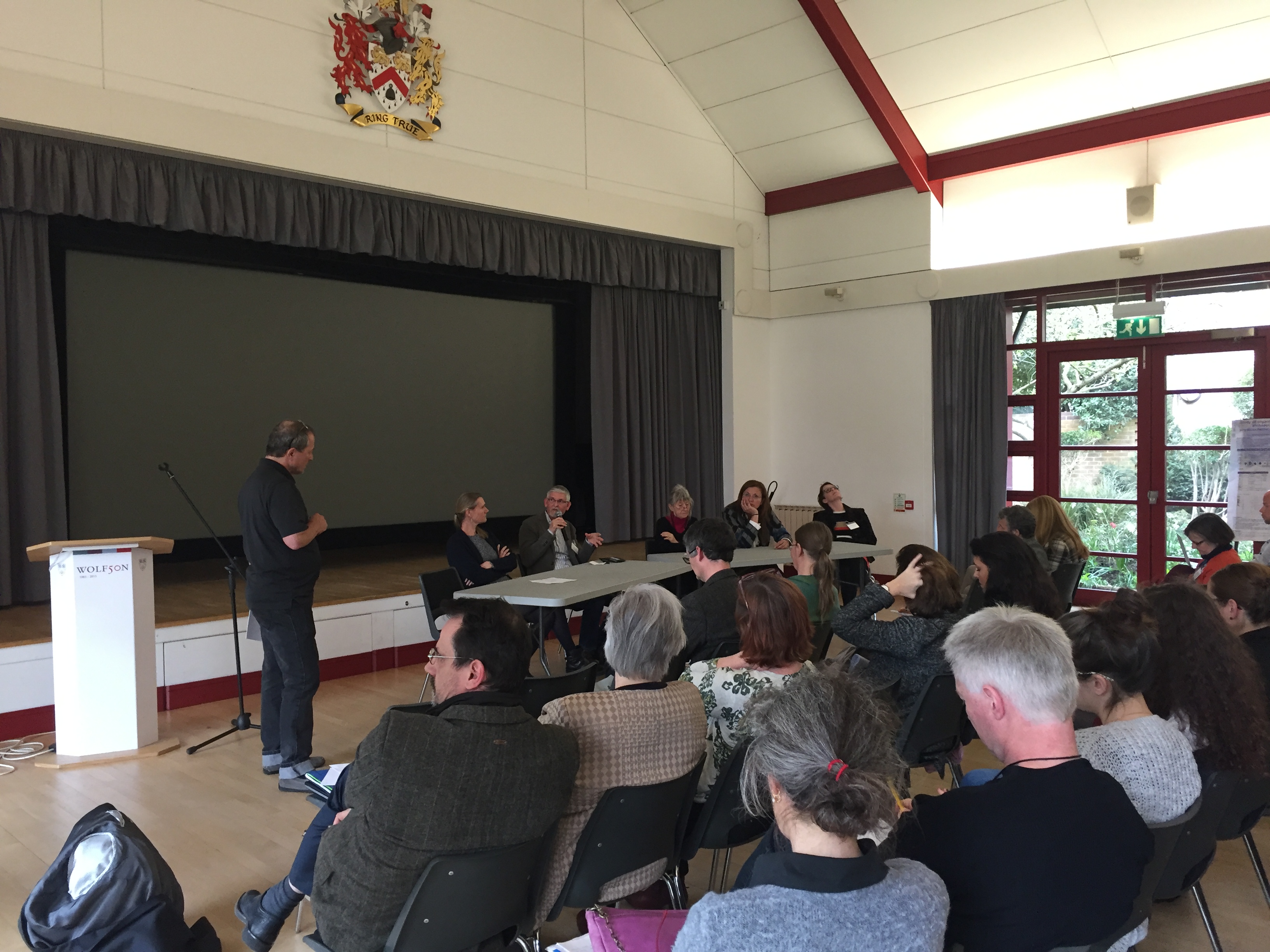
The talks ended with a panel discussion, which raised questions like “what is conservation research” or “how much should research be stressed in the conservation-restoration curriculum?” but these questions will not be discussed in length in this article. Participants then enjoyed a glass of wine while gathering around the posters designed by students.
In conclusion, this conference, although oriented towards teachers and how to make their courses better, was very interesting for students and young graduates. This forum showed that teachers are constantly trying to improve conservation-restoration coursework, despite little means, little time and heavy responsibilities and expectations from schools and universities.
Camille Polkownik – 1st year Post Graduate Intern at the Hamilton Kerr Institute
The students posters will be soon posted on CeROArt (the link will be added as soon as it becomes available).
Ms Camille Polkownik graduated with a Master Degree in the Conservation and Restoration of Paintings in 2014, from the École nationale supérieure des arts visuels de La Cambre in Brussels . She also has a Bachelor degree in the Conservation and Restoration of Painted Works (2011) from the Superior School of Fine Arts, in Avignon, France. She has interned in the Royal Institute for Culture Heritage (KIK-IRPA, Belgium), the Museum of Fine Arts in Nice (France), in private studios and at the Art Gallery of New South Wales (Sydney, Australia).
To contact Camille Polkownik : camille.polkownik@gmail.com

